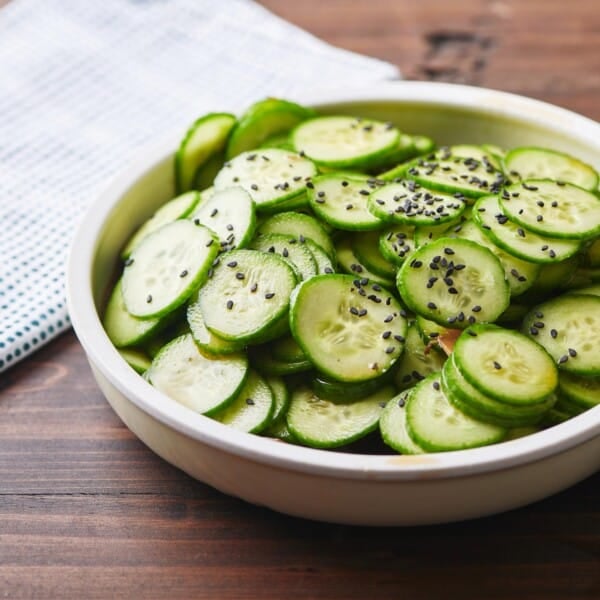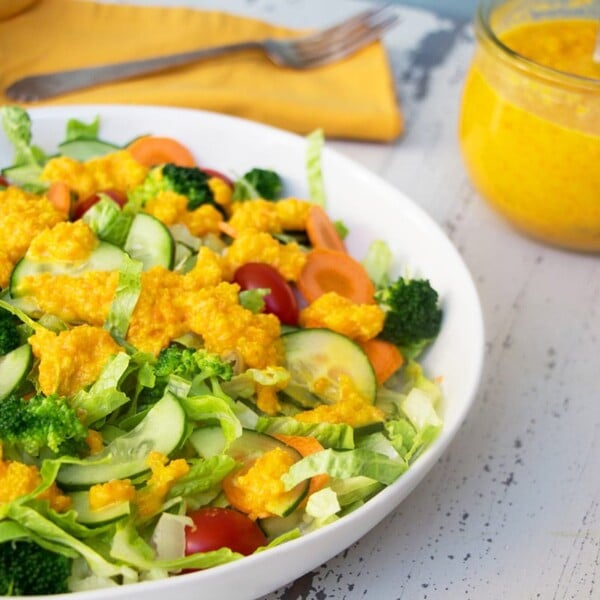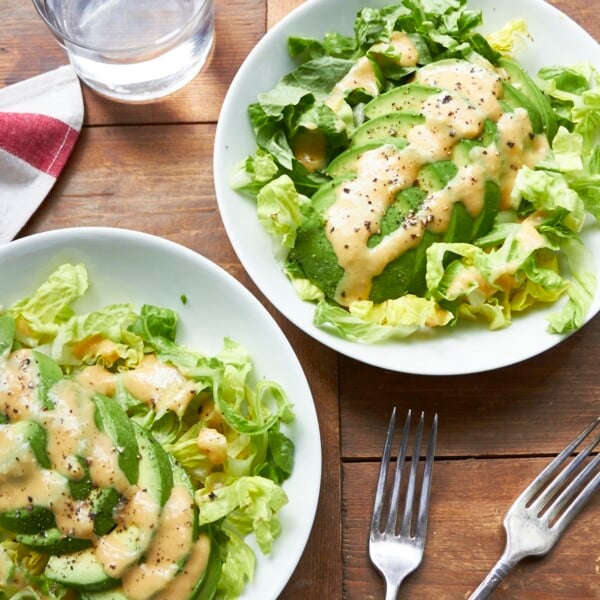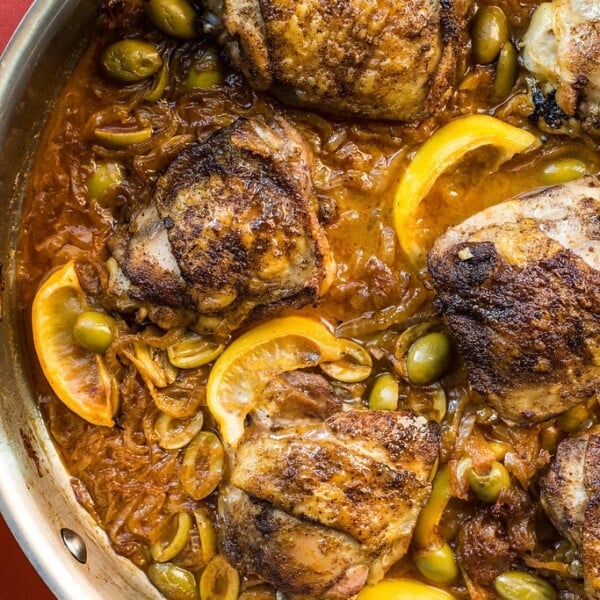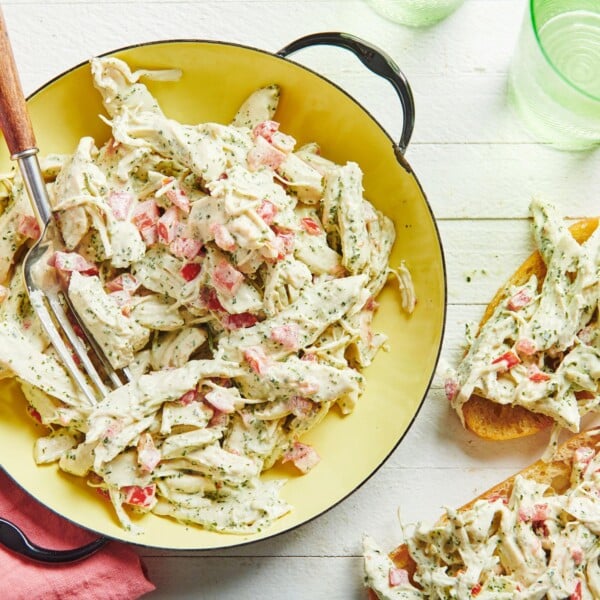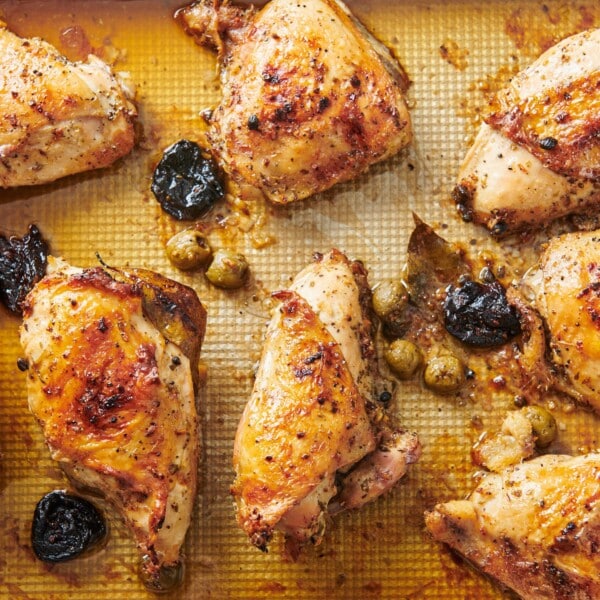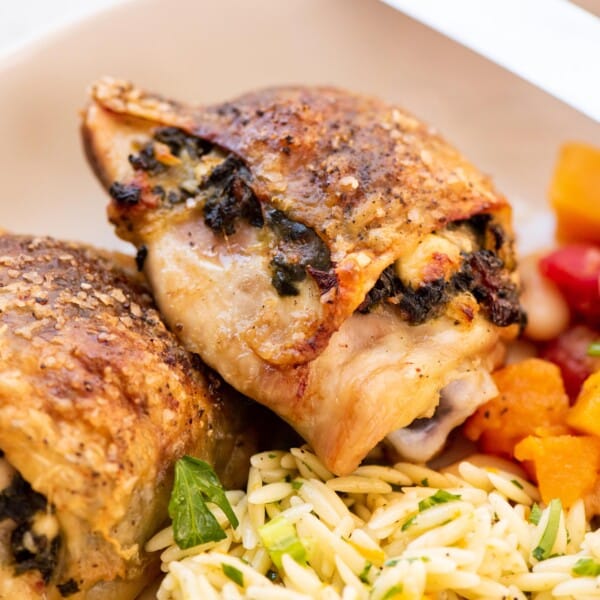Chicken Yaki Udon
on Oct 08, 2023, Updated Apr 10, 2024
This post may contain affiliate links. Please read our disclosure policy.
This flexible Japanese noodle dish is jammed with colorful vegetables and chunks of chicken, pulled together with a quick flavor-packed sauce.
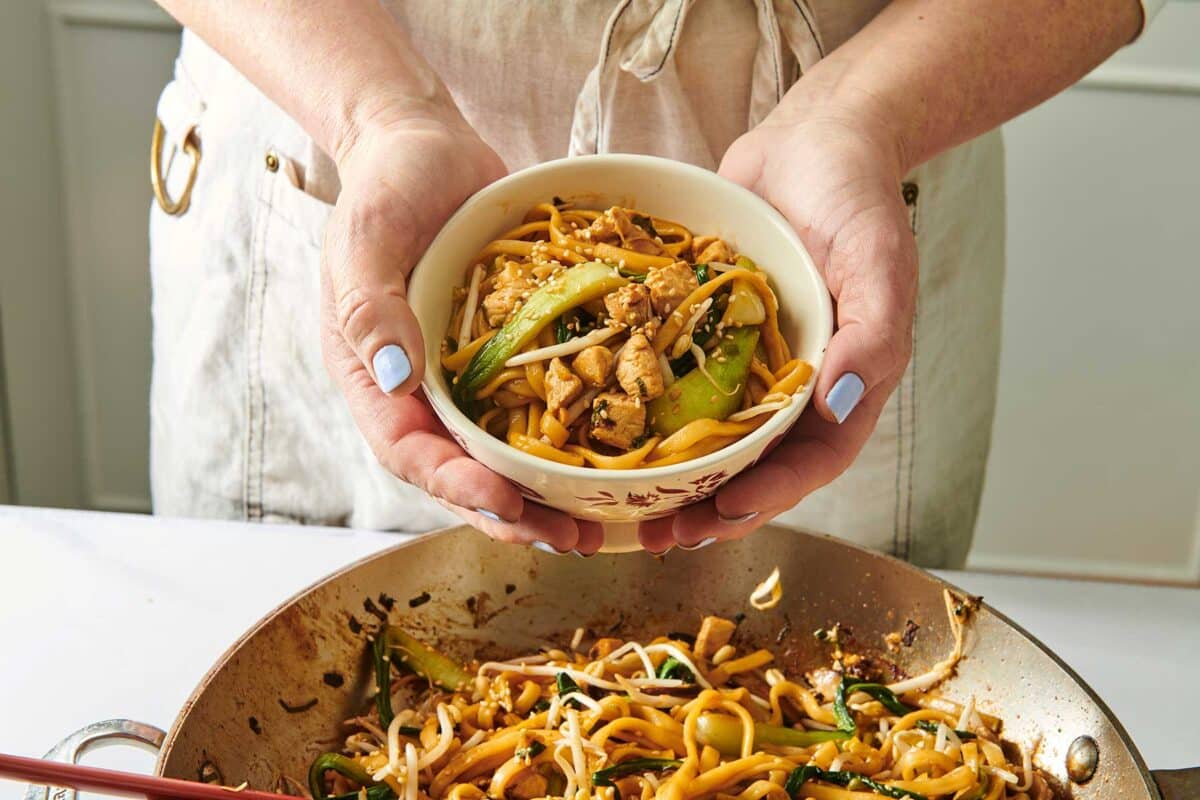
Udon noodles are my favorite Asian noodles, with their pillowy, toothsome plumpness. This flavorful noodle dish is exactly the kind of thing I gravitate to at a Japanese restaurant. Make sure you have all of the ingredients prepped (including cooking the udon) before you start the stir-fry, as it will go very fast — once the food hits the pan, dinner will be ready in 10 minutes!
Whenever we go to a Japanese restaurant, someone in my family will order this type of udon noodle dish. Scooping up these thick noodles with chopsticks is so satisfying, and there is never a noodle left behind.
If you want to make these noodles part of a larger meal (though this is a one-dish hit for sure!), you could pair the noodles with Braised Baby Bok Choy, Simple Stir-Fried Broccoli, or Japanese Miso Eggplant. For another homey Japanese chicken dish, try Takikomi Gohan with Chicken.
Table of Contents
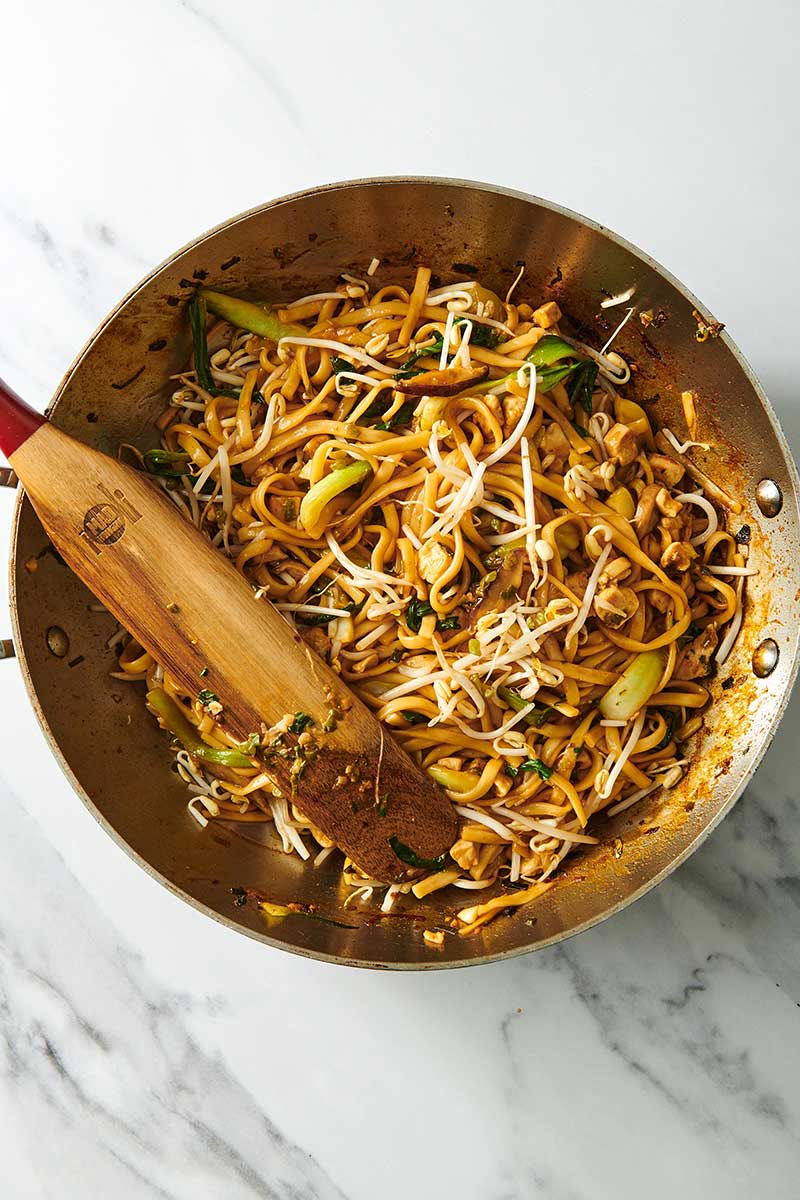
Chicken Yaki Udon: This flexible Japanese noodle dish is jammed with colorful vegetables and chunks of chicken, pulled together with a quick flavor-packed sauce.
Tweet This
Yaki Udon vs. Udon
Udon noodles are flour-based Japanese noodles. Once cooked, they plump up into fat-chewy noodles that are featured in all kinds of dishes, from soups to stir-fries. “Yaki udon” means stir-fried udon noodles — the word yaki translates to “fry.” In this version, the chicken shares the stage with the noodles and the vegetables.
Like lo mein, yaki udon is a stir-fried Asian wheat-based noodle dish. Udon noodles are simply made of wheat flour, water, and salt (occasionally with some tapioca starch mixed in), while lo mein noodles have egg in them. Both yaki udon and lo mein are stir-fried noodle dishes, usually with a soy sauce-based sauce and often vegetables. Other add-ins may be included, like shrimp, pork, beef, and, in this case, chicken.
You can buy frozen udon noodles, fresh udon noodles, or dry udon noodles. Just cook according to package directions and then add them as below in the recipe.
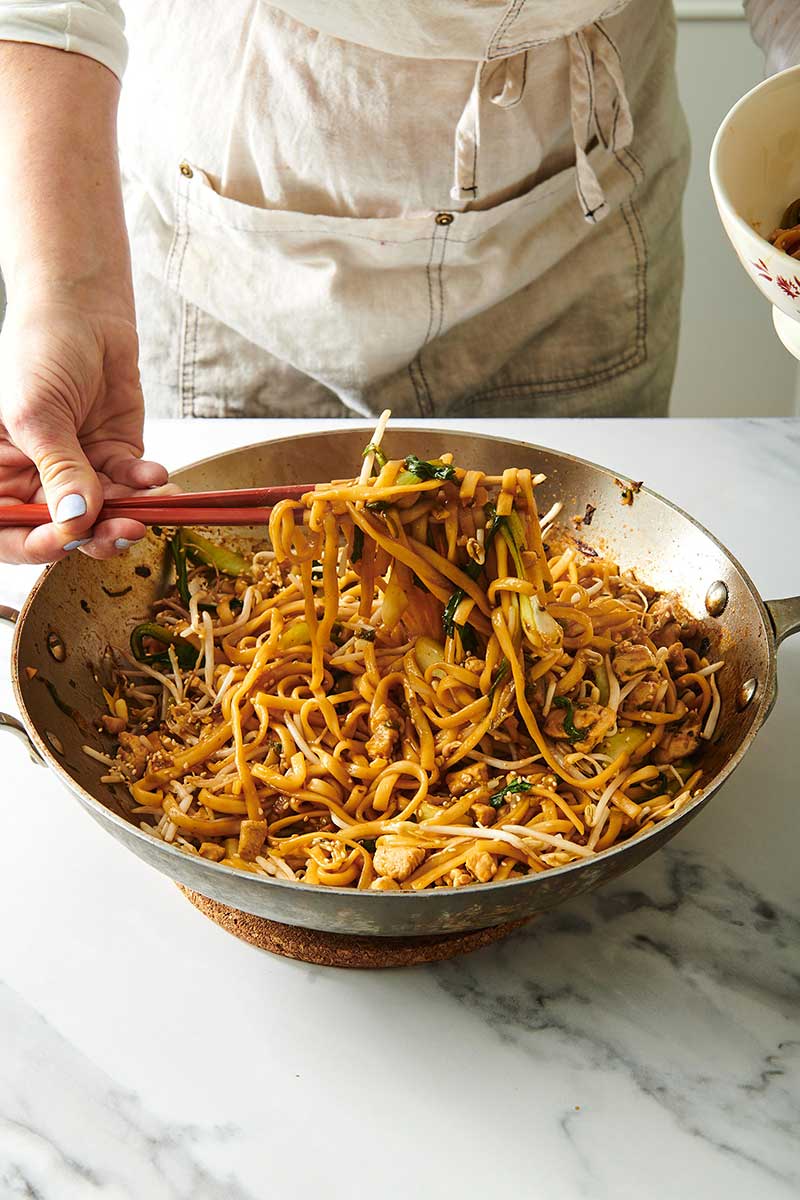
Ingredients
- Udon noodles – This recipe is written with dried noodles, but you can substitute 1 pound of fresh udon noodles if they are available near you.
- Chicken or vegetable stock – Use a lower sodium stock so that you can control the amount of salt in the recipe.
- Soy sauce – Forms the flavorful base of the sauce.
- Mirin – Mirin is a type of lightly sweetened rice wine commonly used for cooking. If you can’t find it, use dry sherry, dry sake, or 1 ½ teaspoons of rice vinegar instead.
- Honey – Sweetens the sauce. You could use agave or brown sugar, too, instead.
- Chili garlic sauce – I like using this Asian pantry sauce because it packs a real punch of flavor, but really, any hot sauce will work here. Sriracha is another good option.
- Toasted sesame oil – Really rounds out the sauce with a deep, nutty flavor.
- Vegetable or grapeseed oil
- Scallions – Add freshness and visual appeal.
- Minced garlic – A small amount adds so much flavor.
- Mushrooms – You can use any kind of mushroom here. Try to choose one with a bit of body, like shiitake.
- Chicken – Ground or finely diced are both fine.
- Bok choy – Adds a great texture to this yaki udon with its tender bite.
- Bean sprouts – You should be able to find these in most grocery stores. I love how they blend in with the noodles and surprise you with a soft crunch.
- Toasted sesame seeds – These are used to garnish your homemade yaki udon (skip them if you don’t have them!)
Pro Cooking Tips and Variations
- Instead of ground or diced chicken, you can use pork or beef, or even lamb. Or, try diced shrimp instead, which will cook a bit faster.
- You can also switch up the vegetables — instead of bok choy, try broccoli, for instance.
- Play around with different hot sauces; Asian or otherwise.
- I love the bean sprouts at the end, but you can try other types of sprouts or even slivered water chestnuts for crunch.
- You can definitely explore the wide world of mushrooms in this dish — enoki would be a fun choice.
- If you don’t have mirin, which is available at Asian markets and well-stocked markets, as well as online, you can use dry sherry, dry sake, or 1 ½ teaspoons of rice vinegar.
- And try this vegetarian yaki udon if you’re looking for a meat-free version.
- Use a wok or a large skillet for this recipe. Make sure the sides are high and the pan is large because a lot of ingredients will be added to this pan.
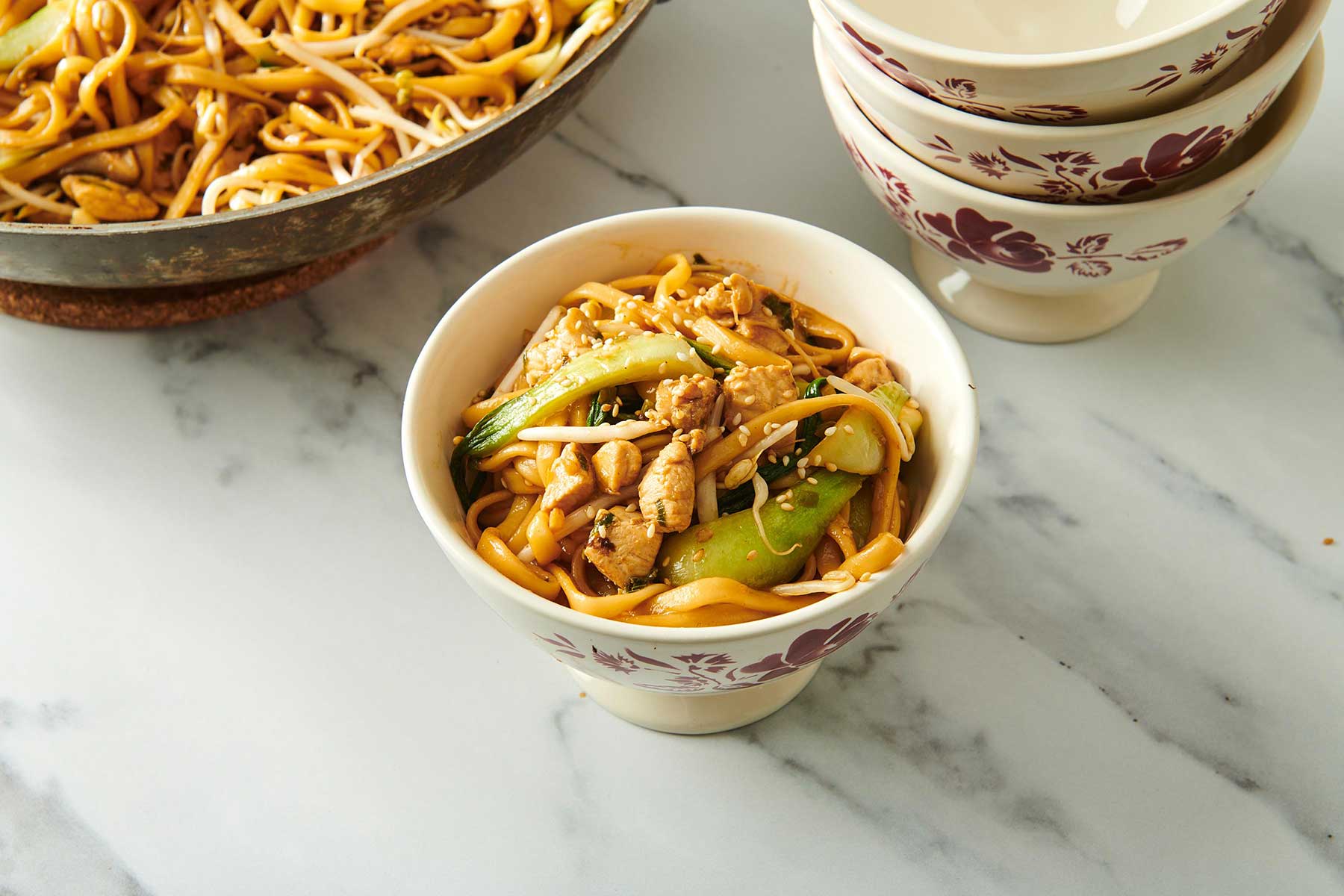
How to Make Yaki Udon
- Cook the noodles according to package directions: Drain and set aside.
- Make the sauce: Combine the stock, soy sauce, mirin, honey, chili garlic sauce, and sesame oil.
- Stir fry the aromatics: Quickly cook the scallions and garlic.
- Stir fry the vegetables & chicken.
- Add the noodles: Pour in the sauce, toss well, and continue cooking to thicken the sauce and heat everything through.
- Finish: Toss the finished yaki udon with the bean sprouts. Serve immediately, and top with toasted sesame seeds, if desired.
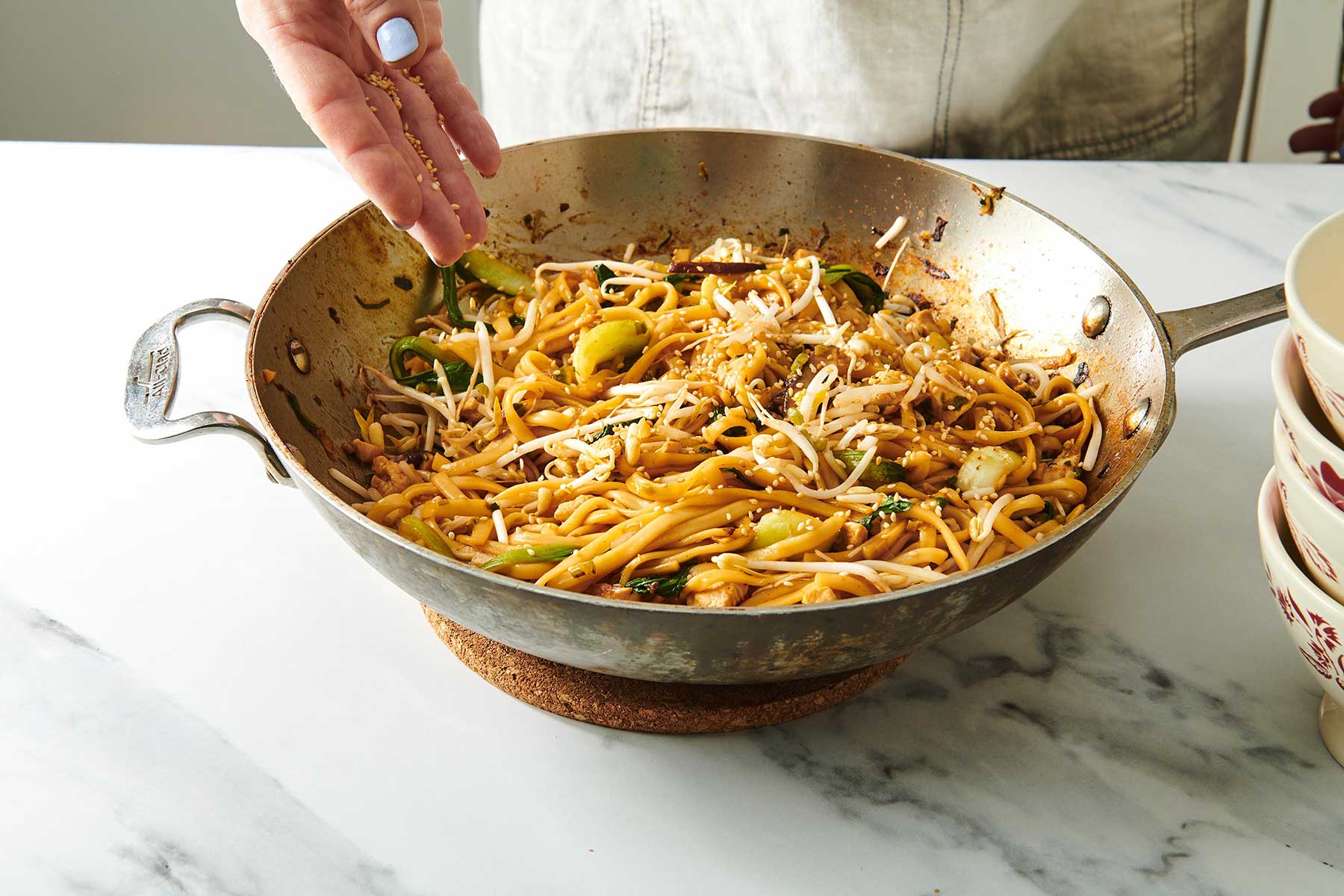
FAQs
Yaki udon and yakisoba are made with different kinds of noodles and often have different sauces as well. Yaki udon is made with udon noodles, while yakisoba is made with Chinese wheat noodles. You may be surprised to learn that yakisoba is usually not made with real soba noodles, which are buckwheat-based.
Udon noodles are thick, long noodles originating in Japan. The noodles are made from wheat flour, which gives them a springy, glutinous texture and a delicate flavor. Udon noodles are often eaten in soups or in yaki udon, which is a stir-fried dish.
True, restaurant-style stir-frying can only be done in a wok, but at home, it is possible to stir-fry without one. The wok is a great pan for cooking at high temperatures because its high sides and rounded bottom allow for all the ingredients to make contact with the pan at once and thus cook evenly. I like to substitute the largest sauté pan in my collection because the large surface area compensates for the flatter shape. I would advise against using a pot or anything with a small bottom surface.
What to Serve With Chicken Yaki Udon
This is truly a one-dish meal, with the protein, vegetable, and starch all included. However, if you want to add some dishes to your menu, you can try:
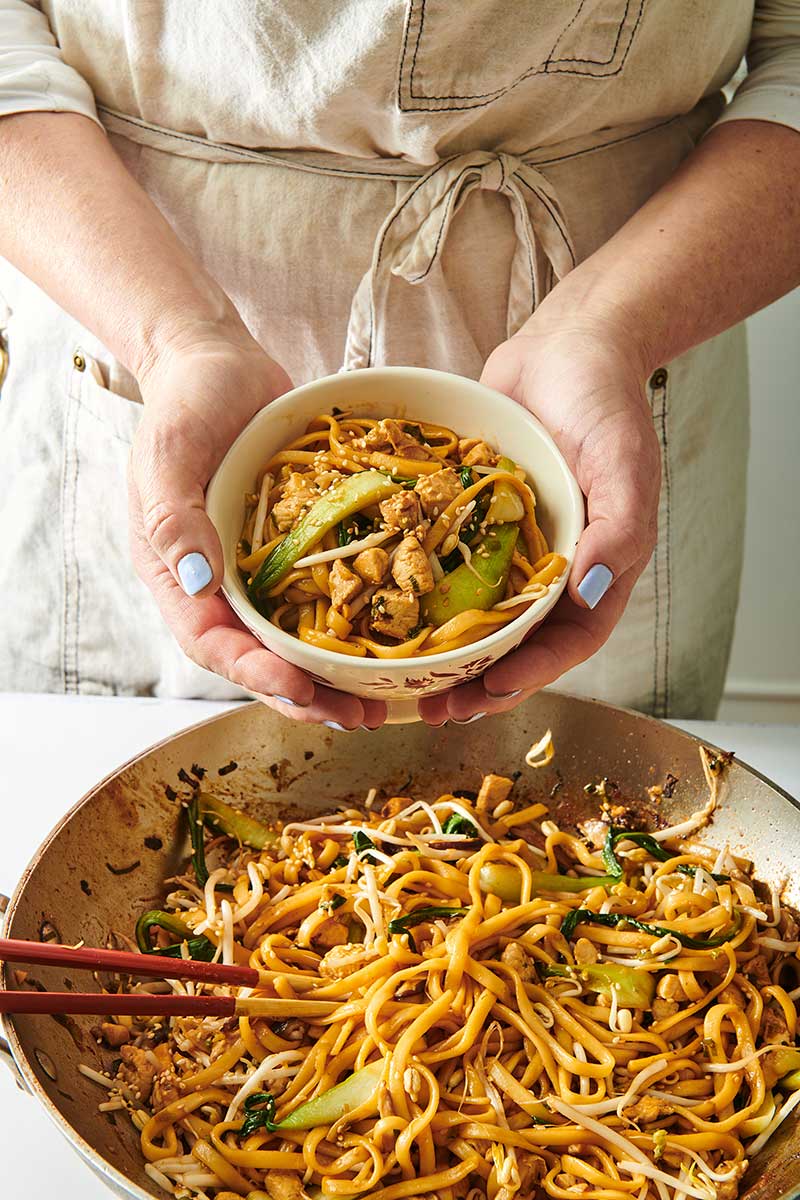
More Asian Noodle Dishes
- Vegetable Udon Noodle Soup
- Thai Chicken Noodle Soup
- Drunken Noodles
- Noodles with Peanut Sauce
- Shrimp Lo Mein
Pin this now to find it later
Pin It
Chicken Yaki Udon
Ingredients
- 10 ounces dried udon noodles (or use 1 pound fresh udon noodles)
- ½ cup chicken or vegetable stock
- ¼ cup soy sauce (or more to taste)
- 1 tablespoon mirin (rice wine for cooking; see Note)
- 2 teaspoons honey (or agave or brown sugar)
- 1 tablespoon chili garlic sauce (or more to taste; or use another hot sauce)
- 1 teaspoon toasted sesame oil
- ¼ cup vegetable or grapeseed oil (any neutral oil)
- ½ cup sliced trimmed scallions (white and green parts)
- 1 teaspoon minced garlic
- ½ cup sliced mushrooms (any kind; shiitake are especially good)
- ½ pound ground or finely diced chicken (white or dark meat)
- ½ cup sliced bok choy
- 1 cup bean sprouts
- Toasted sesame seeds (to garnish)
Instructions
- Cook the noodles according to package directions. Drain and set aside.
- While the noodles are cooking, make the sauce. In a small bowl, mix together the vegetable stock, soy sauce, mirin, honey or other sweetener, chili garlic sauce or other hot sauce, and sesame oil.
- In a wok or a very large skillet, heat the oil over medium-high heat until shimmering. Add the scallions and stir fry for 1 minute, then add the garlic and stir fry for 30 more seconds. Add the mushrooms and stir fry for 3 minutes until the mushrooms start to brown. Add the chicken and stir fry for 3 minutes, until it starts to turn white. Then add the bok choy and sauté for another 2 minutes until it starts to wilt. Add the cooked, drained udon noodles and the sauce and stir fry until the noodles are hot throughout and the sauce has coated the noodles and vegetables evenly, about 3 minutes. Add the bean sprouts and toss. Top with the sesame seeds and serve hot.
Notes
- Instead of ground or diced chicken, you can use pork or beef, or even lamb. Or, try diced shrimp instead, which will cook a bit faster.
- You can also switch up the vegetables — instead of bok choy, try broccoli, for instance.
- Play around with different hot sauces; Asian or otherwise.
- I love the bean sprouts at the end, but you can try other types of sprouts or even slivered water chestnuts for crunch.
- You can definitely explore the wide world of mushrooms in this dish — enoki would be a fun choice.
- If you don’t have mirin, which is available at Asian markets and well-stocked markets, as well as online, you can use dry sherry, dry sake, or 1 ½ teaspoons of rice vinegar.
- And try this vegetarian yaki udon if you’re looking for a meat-free version.
- Use a wok or a large skillet for this recipe. Make sure the sides are high and the pan is large because a lot of ingredients will be added to this pan.
